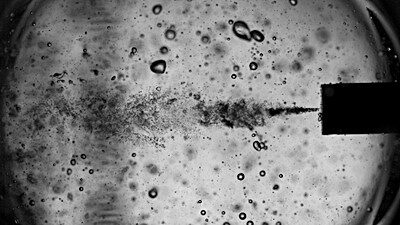|
Landeshauptstadt Dresden - www.dresden.de https://www.dresden.de/en/business/tomorrow-s-home/news/2024/001-hykapro.php 24.06.2024 16:21:43 Uhr 22.04.2025 04:57:11 Uhr |
|
New wastewater treatment process from Dresden renders micropollutants harmless
Now it's time to get to grips with the pollutants in our waters - with hydrodynamic cavitation (HyKaPro). This is a new process from the think tank of the Helmholtz-Zentrum Dresden-Rossendorf (HZDR). Bursting vapor bubbles create extreme conditions that even the chemically extremely stable micropollutants cannot withstand. A milestone in the fight against water pollution caused by contaminated wastewater! The next step for the Dresden research team is to bring the technology to market maturity.
Pharmaceutical residues, antibiotics from animal husbandry or chemicals that have hormone-like effects even in the smallest quantities: so-called micropollutants in our waters are a real problem for the environment. However, conventional wastewater treatment plants are reaching their limits in combating them. One possible solution is the oxidation process: By adding oxygen, the pollutants are chemically broken down and lose their harmful effects on the environment.
Researchers at the HZDR have now developed this process further - and given it its own name: Hydrodynamic Cavitation. Their goal: to intensify and accelerate oxidation reactions with the help of cavitation effects - a turbo for traditional oxidation processes, so to speak. Bursting vapor bubbles create extreme conditions in close proximity to the pollutants carried in the water - temperatures of 4,700 degrees Celsius and pressures of 9,900 atmospheres. The result is a chain reaction: so-called hydroxyl radicals are formed, bind to the pollutants and render them harmless.
The technology has already proven to be extremely effective under laboratory conditions. Now the research team wants to take the next step and bring the process to market maturity together with operators of industrial wastewater treatment plants. It is confident that it will not only prove the efficiency of hydrodynamic cavitation, but also take a significant step towards environmentally friendly water purification: in municipal and industrial wastewater treatment as well as in agriculture and drinking water treatment.







